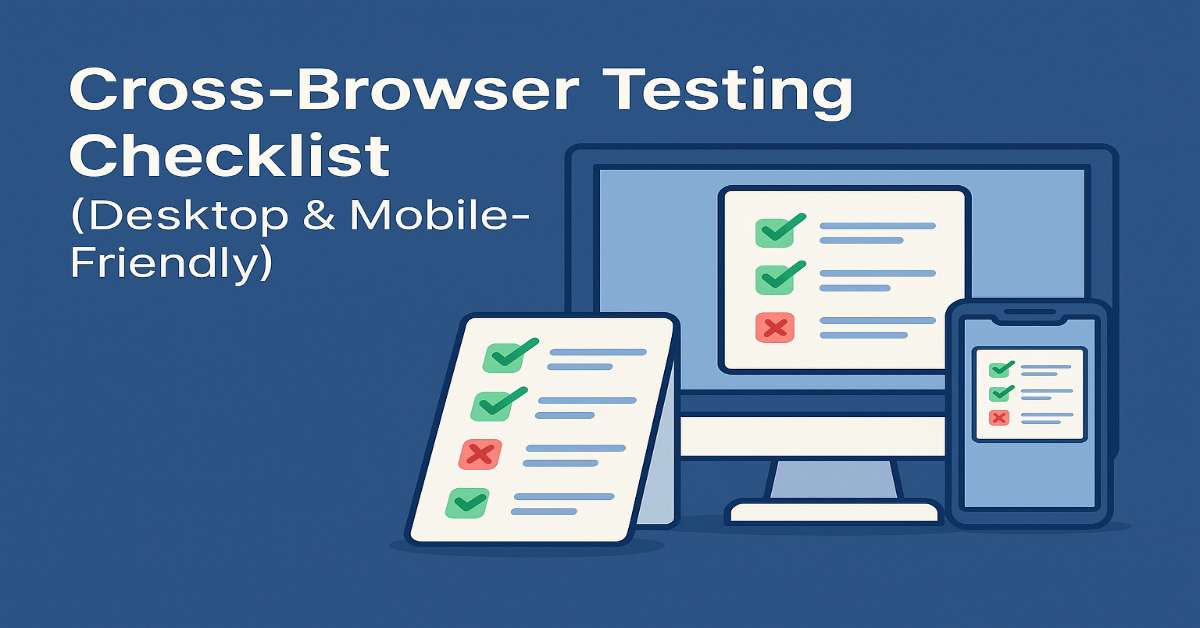 WEB TESTING
WEB TESTING Cross-Browser Testing Checklist (Desktop & Mobile-Friendly)

In a world of Chrome, Safari, Firefox, and 47 Android devices, it works on my machine,” just doesn’t cut it. That’s where cross-browser testing comes in: you’re testing for reality, not just perfection. Now, let’s walk through the ultimate checklist to make sure your app behaves consistently across browsers, devices, and screen sizes:
What is Cross-Browser Testing?
It’s the process of testing a web app’s functionality, UI, and performance across:
- Browsers (Chrome, Safari, Firefox, Edge, etc.)
- Devices (desktop, mobile, tablets)
- Operating systems (Windows, macOS, Android, iOS)
- Viewports and screen resolutions
This ensures your users get a consistent experience, regardless of how they show up.
Cross-Browser Testing Checklist (Grouped for Speed)
When you’re juggling multiple browsers, devices, and deadlines, testing efficiently becomes just as important as testing thoroughly.
Here's a quick checklist to help you test faster without missing essentials:
Functional Compatibility
- Buttons, links, and form inputs work in all browsers
- JavaScript features behave as expected
- SPA routing and URL handling work smoothly
- Modal popups, tooltips, and dropdowns render properly
Visual Consistency
- Fonts and icons render consistently (especially with fallbacks)
- Responsive layout doesn’t break at any resolution
- Hover, focus, and active states look right
- Sticky/fixed elements behave correctly on scroll
Mobile & Touch Support
- Hamburger menu works and is tappable
- Swipe/gesture-based components behave natively
- Keyboard and input fields don’t get hidden by soft keyboards
- Zoom/viewport scaling behaves on iOS and Android
Performance & Reliability
- Lazy-loaded content appears properly
- Page load time is acceptable on all platforms
- Error handling is consistent (e.g., 404, offline mode)
- Console errors are minimal across browsers
Accessibility & Fallbacks
- HTML5 gracefully degrades on older browsers
- ARIA labels and semantic tags are supported
- Forms are keyboard-navigable
- Alt text and visual hierarchy work for screen readers
Tools to Use
- BrowserStack / Sauce Labs: Live cross-browser & real device cloud testing
- Lambdatest: Budget-friendly with automation support
- Chrome DevTools: Emulate mobile & older browsers
- Playwright / Cypress: Add cross-browser testing with parallel runs
Bonus Tips: Don’t forget to test on actual mobile devices when possible—emulators miss nuance like keyboard behavior and touch gestures.
Final Thoughts
Cross-browser testing doesn’t mean testing everything, everywhere, forever. It means testing smart—based on your real user base. Start with analytics to target priority browsers, automate what you can, and always keep usability front and center.